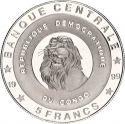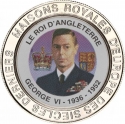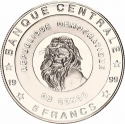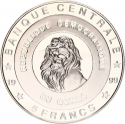You are about to finish your registration. Please check your mailbox (including spam folder). There should be a letter with a confirmation link. Check setting to make sure that your e-mail address is correct.
Send letter againDescription
The introduction of the Euro in Vatican City occurred on January 1, 2002, when the tiny independent state adopted the Euro as its official currency, replacing the Italian lira. As one of the smallest countries in the world, the Vatican's transition to the Euro marked a significant step in its economic integration with the European Union, despite the Vatican not being an EU member. The Vatican's unique status and its use of the Euro underscored its commitment to modern financial practices while maintaining its historical and cultural identity. Coin designs featured various symbols of the Catholic Church and the Vatican, making them distinct from standard Euro currency. The adoption of the Euro facilitated smoother financial transactions for both the Vatican and the millions of visitors it receives each year, contributing to its economy while reinforcing its connection to Europe.
Obverse

|
Depicts an official emblem of the Laurent Kabila regime: a mature male lion standing to the left amid the grass, symbolizing strength and authority. Above the lion is the country’s name in French, and the date of issue is placed below. REPUBLIQUE DEMOCRATIQUE DU CONGO |
|---|---|
Reverse

|
Depicts the iconic landmark of Vatican City, St. Peter's Basilica, along with the square that includes the red granite Egyptian obelisk. The first euro minted is depicted above the Basilica, accompanied by an inscription in French commemorating the occasion and the denomination below. L' INTRODUCTION DU L'EURO DU VATICAN |
| Edge |
5 Francs
Introduction of the Euro in Vatican City
KM#
Introduction of the Euro in Vatican City
Characteristics
| Type | Commemorative Issue (Non-circulating) |
| Material | Cupronickel |
| Weight | - |
| Diameter | 40 mm |
| Thickness | - |
| Shape |
|
| Alignment | Medal |







